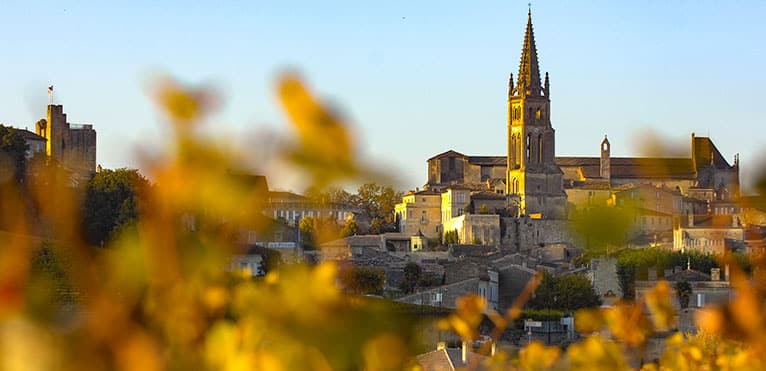
Contents
Listrac-Médoc is a wine appellation located on the left bank of the Bordeaux river, in the Médoc subdivision of the Bordeaux vineyards. Representing around 600 hectares and producing 30,000 hectolitres of wine each year, it is the smallest of the Médoc’s six communal appellations. An Appellation d’Origine Contrôlée (AOC), the Listrac-Médoc vineyards produce exclusively red wine.
Listrac-Médoc vines have been cultivated for over 2,000 years
Long an unoccupied land, the Médoc has specialized in wine production since ancient times, thanks to the Roman road passing through its villages. In the Middle Ages, the cultivation of vines developed, notably through the strong growth in wine exports to England following the marriage of Henry Plantagenet (future King of England) and Eleanor of Aquitaine in the 12th century. In the 17th century, new techniques such as ouillage, racking and sulfur brought a new lease of life to the vineyards. The wines of Listrac-Médoc have since gained recognition both at home and abroad.
The Listrac-Médoc appellation was recognized in 1957 thanks to the hard work of passionate men. This world-renowned terroir is characterized by its exceptional quality, making it the essential accompaniment to any superior meal. In fact, it can be credited with a number of qualities, including liveliness, delicacy, harmony and longevity.
The Listrac-Médoc AOC grapes can be harvested by hand or by machine. Grapes are ripe when they reach a sugar concentration of 189g/L for Merlot and 180g/L for other grape varieties. Wines must have a minimum alcohol content of 11% vol. There are no châteaux in the Médoc’s 1855 classification, but there are 12 crus bourgeois.
The Listrac-Médoc vineyard is one of the smallest in Bordeaux.
The Listrac-Médoc vineyards are located in the Médoc, to the left of Bordeaux, to the north of Moulis-en-Médoc. It is located solely in the Listrac-Médoc commune and covers 570 hectares.
Its soils are composed of pebbles, gravel, sand and clay. They are therefore rather poor, but allow good water drainage, and the vines can sink their roots deep into the soil to develop and produce excellent quality wine. At an altitude of 43 meters, the Listrac-Médoc vineyards enjoy a temperate oceanic climate.
Listrac-Médoc is a powerful, vigorous wine
Listrac-Médoc vineyards produce exclusively red wines, mainly from Cabernet Sauvignon, Merlot and Cabernet Franc. The former brings a fruity flavor, while the latter produces powerful, age-worthy wines. Secondary grape varieties are Carmenère and Petit Verdot.
Like most Bordeaux wines, Listrac-Médoc wines are dark in color, revealing mahogany highlights with age. Their nose reveals fruity aromas, notably black fruit (blackcurrant, blackberry) and plum. We can still detect hints of ageing, with a bouquet that reveals fairly spicy notes such as vanilla, or empyreumatic aromas with hints of caramel or toast.
On the palate, Listrac-Médoc wines are quite robust, but they are also quite fruity and generous, offering lovely freshness. These are very tannic wines that need to be kept a little longer to express their suppleness.
Listrac-Médoc goes well with red meats and game
Quite powerful, generous wines with good tonicity, Listrac-Médoc wines can be enjoyed with many types of dishes: red meats, mushrooms, pâté and terrines. For example, Listrac-Médoc is a perfect match for prime rib with porcini mushrooms, Easter pâté, entrecôte steak or pan-fried stuffed porcini mushrooms. It is best enjoyed at a temperature of 17°C.
The Listrac-Médoc appellation is world-renowned for its quality, and has made a name for itself thanks to the great vintages of the century, such as 1990 and 2005, and the exceptional vintages of 2000 and 2009.
A small appellation but a wealth of expertise in the Listrac-Médoc AOC estates
Château Fourcas Dupré
With a surface area of 46 hectares, Château Fourcas Dupré dates back to the early 18th century. It was bought in 1843 by Maître Jean Antoine Baptiste Dupré, who gave his name to the estate. In 1970, Alex Laffont and Guy Pagès took over the Château.
Patrice Pagès is now the manager. He perpetuates the philosophy established by his father: meticulousness, expertise and passion, with the constant quest for harmony and balance that characterizes Bordeaux classicism. Renowned for its 2003 Cru Bourgeois Supérieur classification, Château Fourcas Dupré has gone from strength to strength, and is now one of Listrac’s leading Crus Bourgeois.
Composed of clay, alios and above all Pyrenean gravel, the estate’s soils are home to vines with an average age of 30 years, which are cultivated using integrated farming methods.
Château Fourcas-borie
Château Fourcas-borie is located in the heights of the Médoc, in the Listrac-Médoc appellation, close to the Atlantic Ocean. In the family for over 100 years, the estate perpetuates many traditions based on simplicity, pleasure and conviviality. It is managed by Bruno Borie and his mother, Madame Monique Rochette Borie. It’s an estate handed down from mother to daughter, giving the wine a feminine, elegant touch.
Their passion for the region inspires their wines, which are perfectly adapted to it, from the typical saucy mood to the culinary specialties. Their exceptional cru is highly praised by critics, described as precise and charming. The soils on the 22-hectare Listrac Médoc estate are mainly composed of light gravel and clay. This adds a mineral note to the wines.